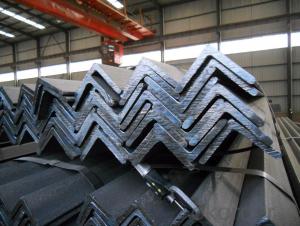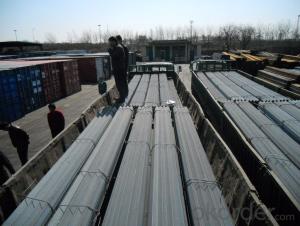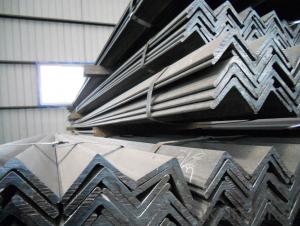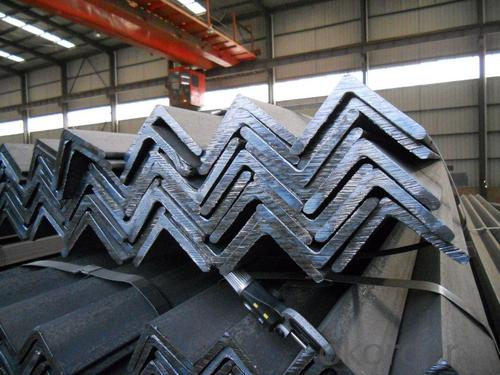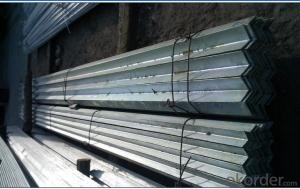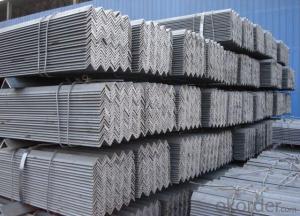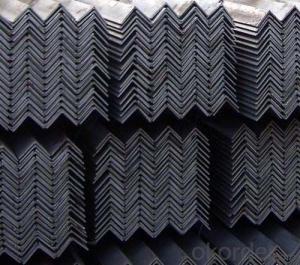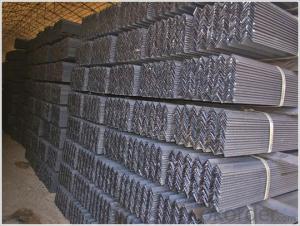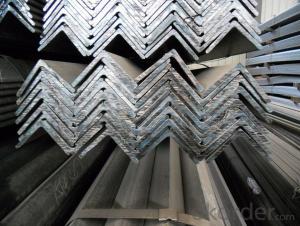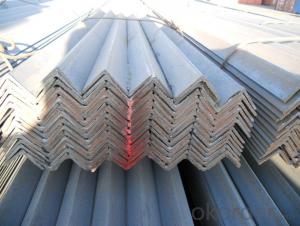Hot Rolled Steel Angle Bar with High Quality 75*75mm
- Loading Port:
- Tianjin
- Payment Terms:
- TT OR LC
- Min Order Qty:
- 25 m.t
- Supply Capability:
- 10000 m.t/month
OKorder Service Pledge
OKorder Financial Service
You Might Also Like
Product Description
Specifications of Equal Angle Steel
1.Standards:GB
2.Length:6m, 12m
3.Material:GBQ235 or Equivalent
4. Size:
Size (mm) | Mass (mm) | Size (mm) | Mass (mm) |
| 75*75*6 | 6.905 | 75*75*8 | 9.03 |
| 75*75*7 | 7.976 |
Usage & Applications of Equal Anlge Steel
Trusses;
Transmission towers;
Telecommunication towers;
Bracing for general structures;
Stiffeners in structural use.
Packaging & Delivery of Equal Angle Steel
1. Transportation: the goods are delivered by truck from mill to loading port, the maximum quantity can be loaded is around 40MTs by each truck. If the order quantity cannot reach the full truck loaded, the transportation cost per ton will be little higher than full load.
2. With bundles and load in 20 feet/40 feet container, or by bulk cargo, also we could do as customer's request.
3. Marks:
Color mark: There will be color marking on both end of the bundle for the cargo delivered by bulk vessel. That makes it easily to distinguish at the destination port.
Tag mark: There will be tag mark tied up on the bundles. The information usually including supplier logo and name, product name, made in China, shipping marks and other information request by the customer.
If loading by container the marking is not needed, but we will prepare it as customers' request.
FAQ:
Q1: Why buy Materials & Equipment from OKorder.com?
A1: All products offered byOKorder.com are carefully selected from China's most reliable manufacturing enterprises. Through its ISO certifications, OKorder.com adheres to the highest standards and a commitment to supply chain safety and customer satisfaction.
Q2: How do we guarantee the quality of our products?
A2: We have established an advanced quality management system which conducts strict quality tests at every step, from raw materials to the final product. At the same time, we provide extensive follow-up service assurances as required.
Q3: How soon can we receive the product after purchase?
A3: Within three days of placing an order, we will arrange production. The shipping date is dependent upon the quatity, how many sizes you want and the plan of production, but is typically 30 to 45 days from the beginning of production.
Images:
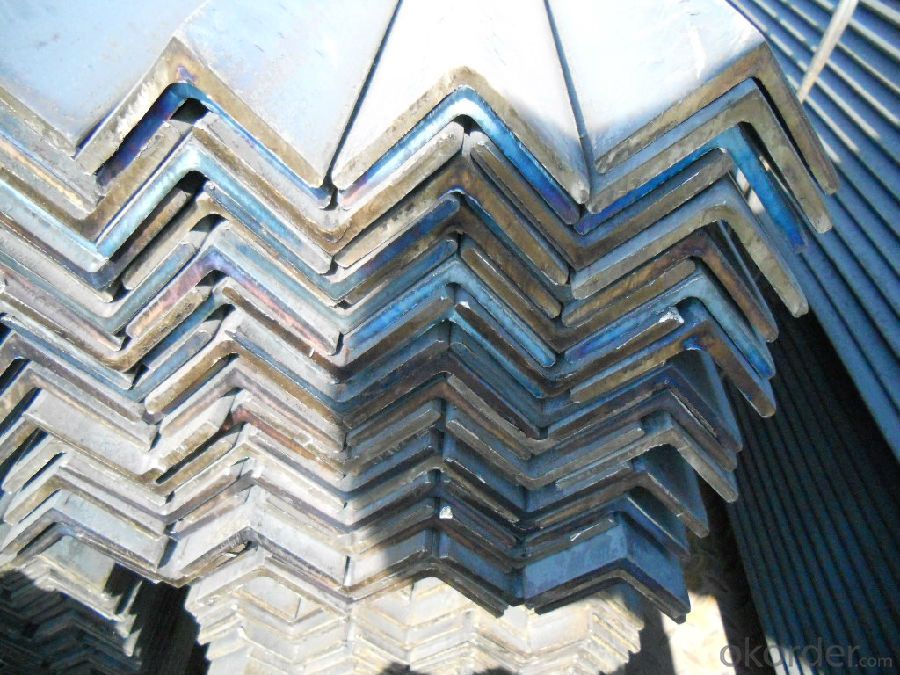
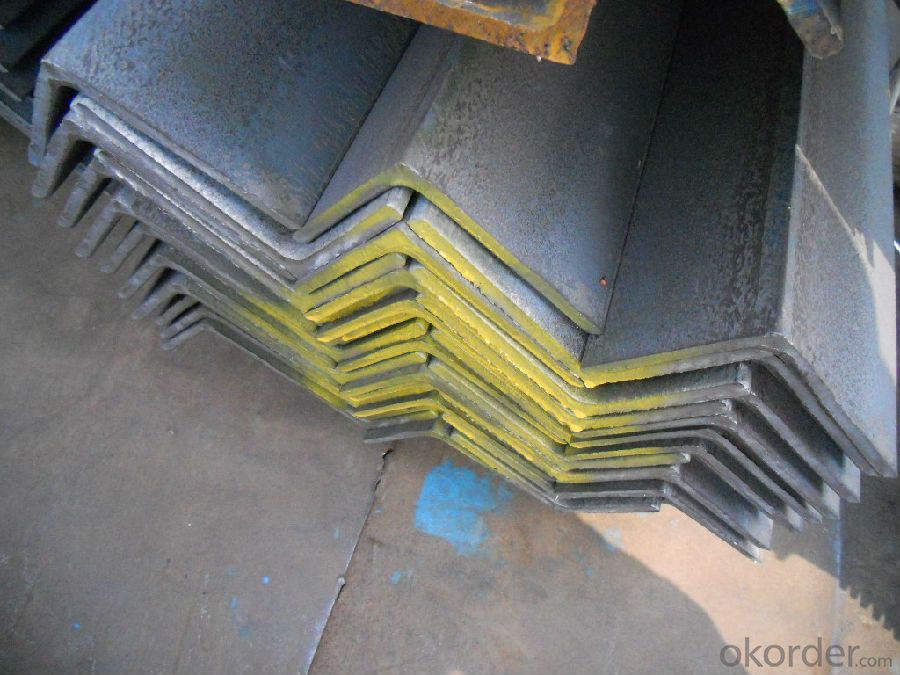
*If you would like to get our price, please inform us the size, standard/material and quantity. Thank you very much for your attention.
- Q: Can steel angles be used for framing?
- Yes, steel angles can be used for framing. Steel angles are commonly used in construction for structural framing and support due to their strength, durability, and versatility. They can provide stability and reinforcement to various building structures, making them suitable for framing applications.
- Q: How are steel angles defined?
- Steel angles are defined by their shape and dimensions. They are L-shaped structural members made of steel with two perpendicular legs of equal or unequal lengths. The angle between the legs can range from 90 to 180 degrees, depending on the specific design and application. Steel angles are commonly used in construction and engineering projects to provide structural support, reinforcement, and stability. The dimensions of steel angles are typically specified by their leg length, thickness, and overall length. These dimensions determine the strength, load-bearing capacity, and versatility of the angle, making it suitable for various applications in different industries. Steel angles are also available in various finishes, such as galvanized or painted, to enhance their durability and resistance to corrosion.
- Q: Can steel angles be used in cold climates?
- Yes, steel angles can be used in cold climates. Steel is known for its durability and strength, making it suitable for various weather conditions, including cold climates. However, it is important to consider the specific requirements and properties of the steel angles being used to ensure they are appropriate for the specific cold climate conditions, such as low temperatures, snow, and ice. Proper insulation and protective coatings may also be necessary to enhance their performance and longevity in cold climates.
- Q: What is the maximum allowable torsional lateral-torsional buckling stress for a steel angle?
- The maximum torsional lateral-torsional buckling stress allowed for a steel angle relies on several factors, including the angle's material properties, dimensions, and the applicable design code or specific usage. In general, the maximum stress allowed for torsional lateral-torsional buckling is determined by assessing the critical load at which the angle would buckle due to combined torsional and lateral loads. This buckling mode occurs when the angle experiences both torsional twisting and lateral deflection simultaneously, resulting in instability. Engineers typically employ various formulas and design codes specific to the application to calculate the maximum allowable stress. These formulas take into account the angle's moment of inertia, cross-sectional dimensions, slenderness ratio, and other geometric properties. It is important to acknowledge that the maximum allowable torsional lateral-torsional buckling stress for a steel angle can differ depending on the design code followed. Design codes such as the AISC Steel Construction Manual or the Eurocode offer guidelines and equations for determining the maximum allowable stress for different types of steel angles. As a result, to ascertain the specific maximum allowable torsional lateral-torsional buckling stress for a steel angle, it is necessary to refer to the relevant design code or seek assistance from a qualified structural engineer.
- Q: Can steel angles be used in furniture manufacturing?
- Yes, steel angles can be used in furniture manufacturing. Steel angles are commonly used as structural supports in furniture construction due to their strength and stability. They can be utilized for creating sturdy frames, legs, and corners in various types of furniture such as tables, chairs, and shelving units.
- Q: What are the different types of steel angle connections?
- There are several different types of steel angle connections commonly used in construction and engineering projects. Some of the main types include: 1. Welded connections: This is one of the most common and traditional methods of connecting steel angles. In this type of connection, the two angles are joined together by welding them at the point of contact. Welded connections provide excellent strength and rigidity, making them suitable for heavy-duty applications. 2. Bolted connections: Bolted connections involve using bolts and nuts to fasten the steel angles together. This method allows for easy disassembly and reassembly of the structure if needed. Bolted connections are often used in situations where frequent adjustments or modifications are required. 3. Riveted connections: Riveted connections involve using rivets to join the steel angles together. Rivets are metal fasteners that are inserted through pre-drilled holes in the angles and then hammered or pressed to secure them. Riveted connections were widely used in older structures and are still occasionally used in certain applications today. 4. Clipped connections: Clipped connections are a type of bolted connection where the angles are connected using special clip angles. These clip angles are bolted to the main angles, providing a secure and rigid connection. Clipped connections are commonly used in steel trusses and frameworks. 5. Gusset plate connections: Gusset plate connections involve using a steel plate, known as a gusset plate, to connect two or more steel angles. The gusset plate is usually bolted or welded to the angles, providing additional strength and stability. This type of connection is often used in structures subjected to heavy loads or dynamic forces. Each type of steel angle connection has its own advantages and disadvantages, and the choice of connection method depends on various factors such as the load requirements, structural design, and project specifications.
- Q: What are the common methods of joining steel angles together?
- The common methods of joining steel angles together include welding, bolting, and using angle brackets or corner braces.
- Q: Are steel angles suitable for manufacturing support brackets for HVAC systems?
- Yes, steel angles are suitable for manufacturing support brackets for HVAC systems. Steel angles are known for their strength, durability, and resistance to corrosion, making them ideal for use in support brackets. They provide the necessary structural support to hold the weight of HVAC components and ensure stability. Additionally, steel angles can be easily fabricated and customized to meet specific bracket design requirements. Their versatility and affordability make them a popular choice in the manufacturing of support brackets for HVAC systems.
- Q: Can steel angles be used for conveyor systems?
- Yes, steel angles can be used for conveyor systems. Steel angles are commonly used in construction and industrial applications due to their strength, durability, and versatility. In conveyor systems, steel angles are often used to provide structural support and stability to the conveyor framework. They can be used to connect various components of the conveyor system, such as the conveyor belt, rollers, and motor, ensuring proper alignment and smooth operation. Additionally, steel angles can be easily fabricated and customized to meet specific design requirements, making them a suitable choice for conveyor systems of different sizes and configurations.
- Q: Can steel angles be used in architectural sculptures and installations?
- Yes, steel angles can be used in architectural sculptures and installations. Steel angles are versatile and commonly used in construction due to their strength and durability. They can be easily welded, bolted, or attached using other methods, making them ideal for creating intricate and complex structures. Steel angles can be shaped and formed into various angles and curves, allowing for creative and unique designs in architectural sculptures and installations. Additionally, steel angles can be finished with different coatings or paints to enhance their aesthetic appeal and protect them from corrosion, making them a suitable choice for both indoor and outdoor installations. Overall, steel angles offer the necessary strength, flexibility, and aesthetic possibilities required for architectural sculptures and installations.
Send your message to us
Hot Rolled Steel Angle Bar with High Quality 75*75mm
- Loading Port:
- Tianjin
- Payment Terms:
- TT OR LC
- Min Order Qty:
- 25 m.t
- Supply Capability:
- 10000 m.t/month
OKorder Service Pledge
OKorder Financial Service
Similar products
Hot products
Hot Searches
Related keywords
